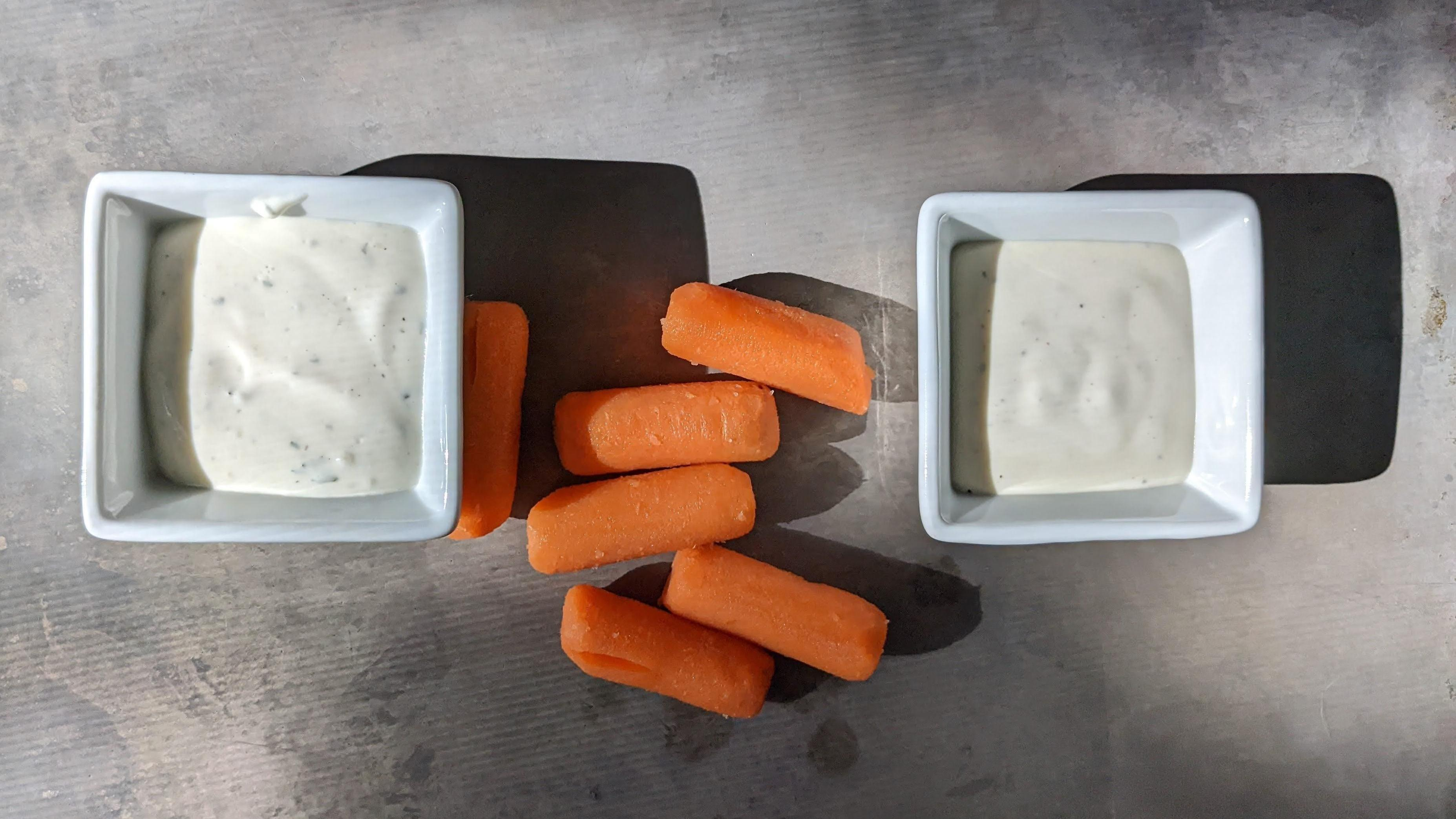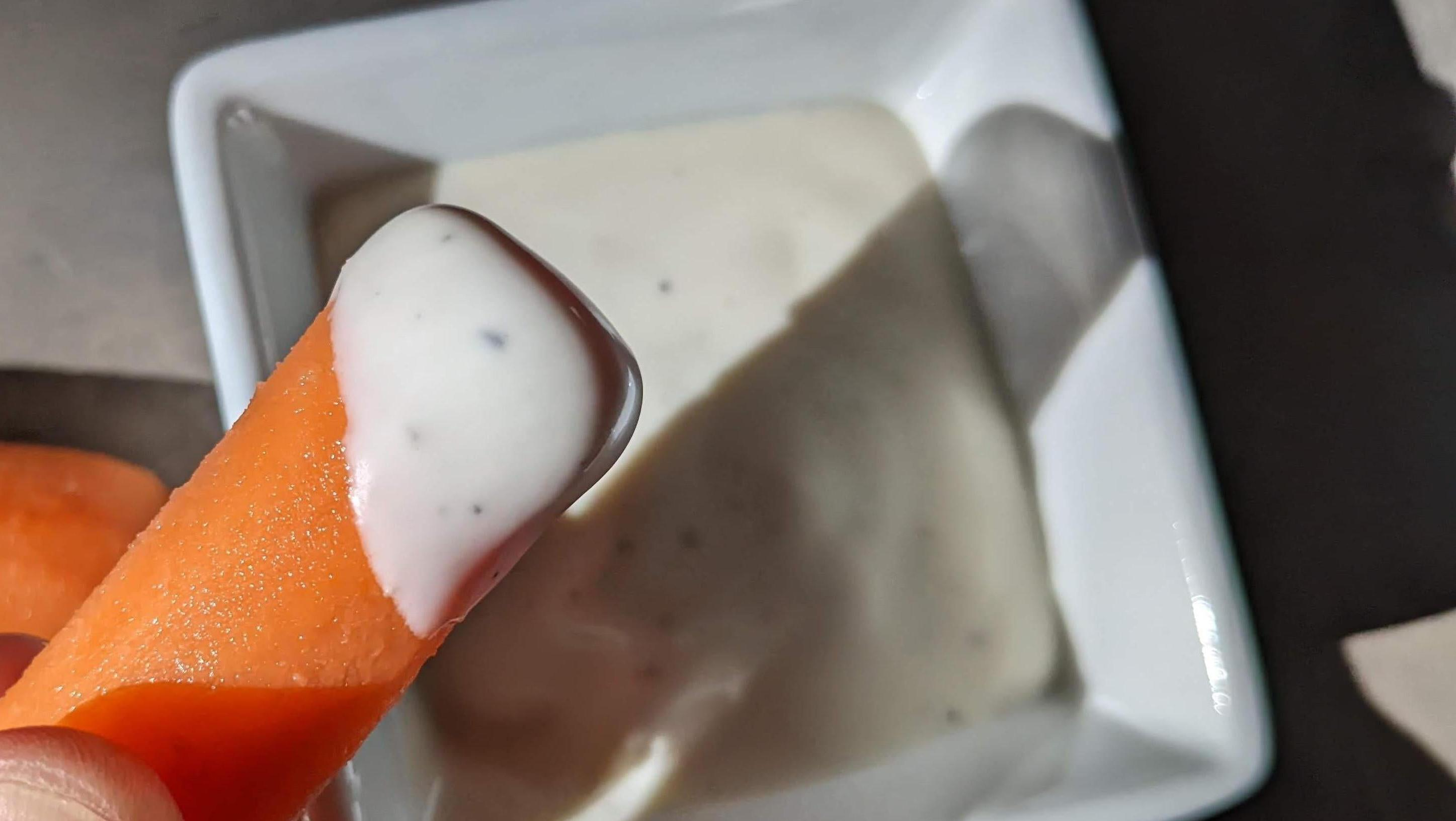Which Is The Best Hidden Valley Ranch?
We put the long-swirling ranch rumors to the (tasty) test.
People love ranch dressing, and when I say "people," I'm mostly talking about myself. For a long time, I simply assumed that Hidden Valley Ranch was the pinnacle of American salad dressing, and that nothing could touch its quintessential ranchy flavor. It's great on salads, makes an unbeatable dipping sauce for appetizers, pairs well with cheap frozen pizza—and yes, I know I'm probably preaching to the choir here. But there's been some quiet rumblings among ranch aficionados that Hidden Valley has a formidable competitor on the market: itself.
When you hear "Hidden Valley Ranch," you probably think of the bottled variety. It's easy to grab at the store, toss into your cart, and not think too much about. But just beyond those bottles, there's another form of ranch waiting for you on the grocery store shelves: Hidden Valley dry seasoning packets.
Bottled ranch dressing vs. dry ranch mix
While many people use Hidden Valley's ranch packets as a seasoning in various recipes, its original intended use was to make fresh ranch dressing at home. Dani Mohrbach recently provided an authoritative ranking of ranch dressing brands, but one surprising piece of information revealed in those rankings was that Mohrbach's favorite ranch dressing was the one served at the pizzeria where she used to work. Much to our surprise, she divulged that the restaurant's "secret recipe" for ranch wasn't much of a secret at all: It was simply Hidden Valley packets prepared exactly as directed, mixed with mayonnaise and buttermilk.
How's that any different from the stuff in the bottle? Well, for starters, the bottled version is engineered to be shelf-stable before it's opened, meaning its formula is fundamentally different. When you mix mayo, buttermilk, and seasonings together, you can't just let that sit at room temperature for long; it'd start going rancid almost immediately. Stabilizers and preservatives incorporated into the bottled dressing ultimately ensure that the mixture won't spoil before you purchase it. But those elements all have their own properties that change the consistency and flavor of the end product.
I bought some Hidden Valley seasoning packets along with a bottle of Hidden Valley Ranch dressing in order to conduct a side-by-side taste test. The seasoning packet couldn't be any easier to turn into ranch—it's just one cup of mayo and one cup of buttermilk with the entire contents of the packet whisked right in. You do need to let the mixture sit in the fridge for at least 30 minutes to thicken up (preferably a little longer, to let the flavors mingle), but after that you're good to go. So, is there a noticeable difference between "homemade" and bottled Hidden Valley?
I tried the bottled ranch first. It had been a while since I'd purchased any, and I'd never really sat there and analyzed the flavor of it as I ate, dissecting its various attributes. Bottled ranch dressing is smooth and glossy, and though it's hard to read immediately, you can taste a touch of garlic and onion powder through the tanginess of its base. It has a savory aftertaste from the monosodium glutamate (MSG) in its ingredient list, with a vaguely herby backdrop. Overall, it's quite a solid representation of ranch, one that is frankly delicious.
But then I dug into the fresh stuff, made from the dry packet mixed with mayo and buttermilk. It's noticeably different in a few ways. If you look carefully at the photo below, you'll notice the ranch has a subtly fluffier texture to it, with a tiny bit of graininess from the seasoning packet ingredients, which were still mingling in the mayo and buttermilk base. (I kept the mixture chilled for an hour and a half before digging in; it's possible that graininess would have gone away after more time in the fridge.)

The dry ranch packets contain xanthan gum, carboxymethylcellulose, and guar gum, all of which are thickeners. The end texture is still thick and creamy like the bottled version, but with an appealing freshly whipped quality from whisking the dressing by hand.
The garlic and onion flavors hit a lot harder upfront, slightly more aggressive than the bottled ranch. The fresh buttermilk carries a lot of weight here, as its tanginess perks up the richness of the mayo quite a bit; the buttermilk flavor is noticeably muted in the bottled version. This fresh ranch is very good, and you can definitely detect that freshness with each bite. I used low-fat buttermilk for this taste test, but next time I'll use whole buttermilk for even more of that added liveliness.
Which ranch tastes better?
Flavor-wise, the ranch dressings are fairly close, unless you're actively seeking to detect the differences between them. The texture is where these dressings truly diverge, and the fresh, fluffy result makes the packet version worth the bit of extra work, especially if you're serving it as a dip.
That being said, depending on how you're going to use it, the bottled stuff is nearly as delicious, and it keeps longer than the fresh kind. According to Hidden Valley, the prepared packet dressing stays fresh in your fridge for three to four weeks, while the USDA says you can keep open bottled salad dressing for up to two months.
Since I don't go through ranch dressing too quickly, it's probably better overall for me to have a bottle on hand, either unopened in the pantry or stored in the refrigerator. But if I'm having guests over and am entertaining with a veggie tray, I'll be sure to whip up a version of my not-so-secret-recipe ranch dip and pretend I made the whole thing from scratch. Because I did. Sort of.

